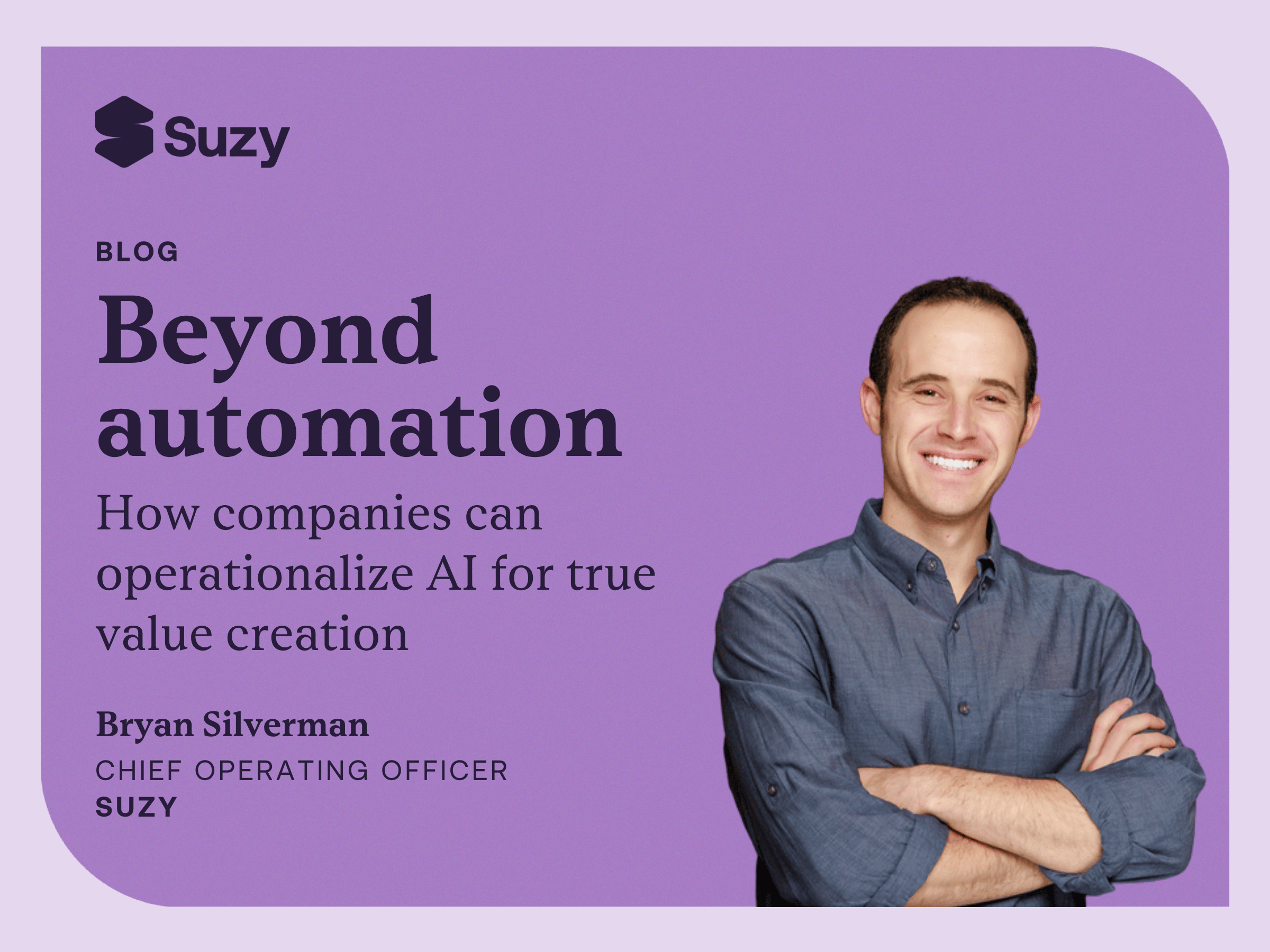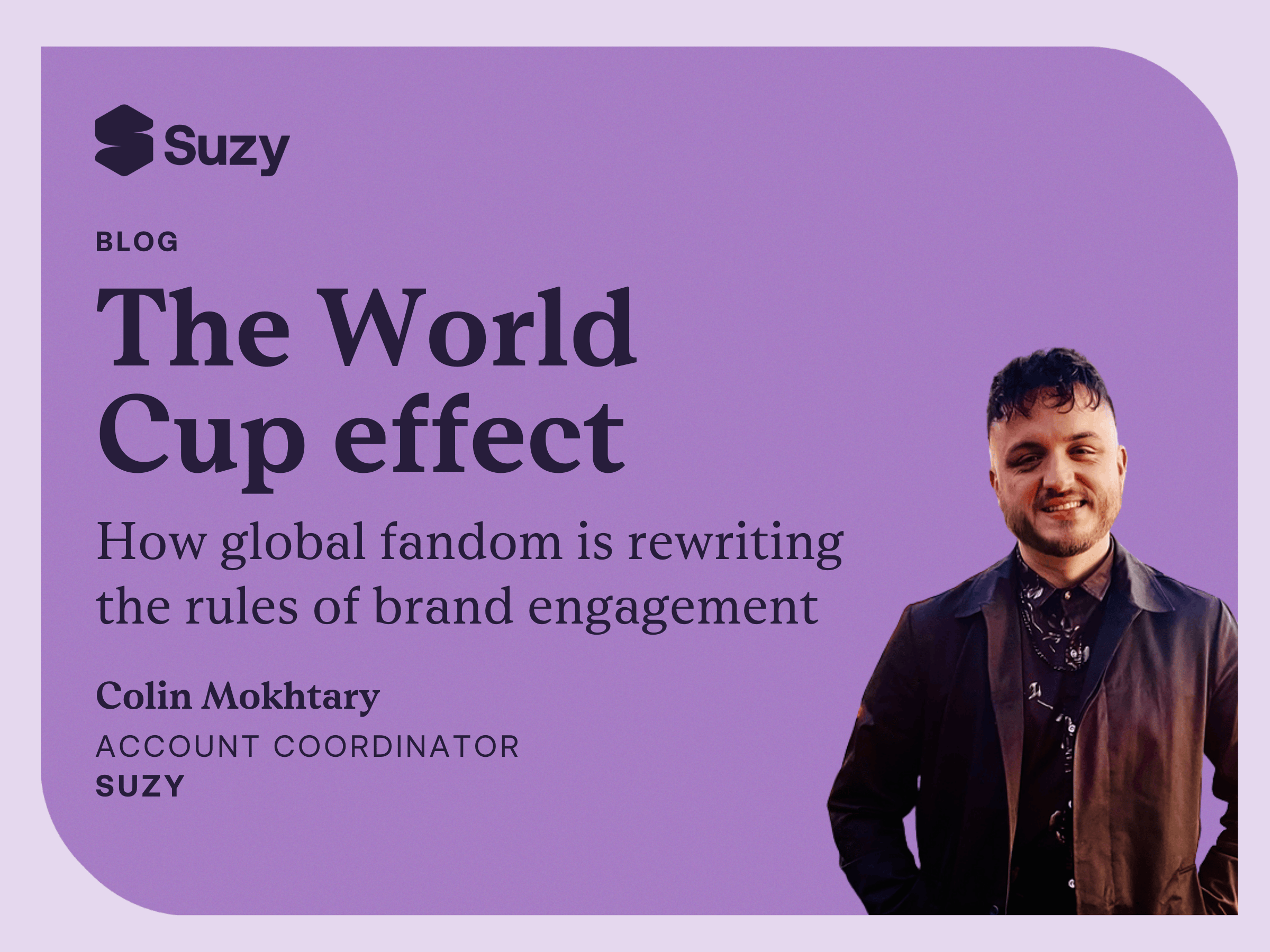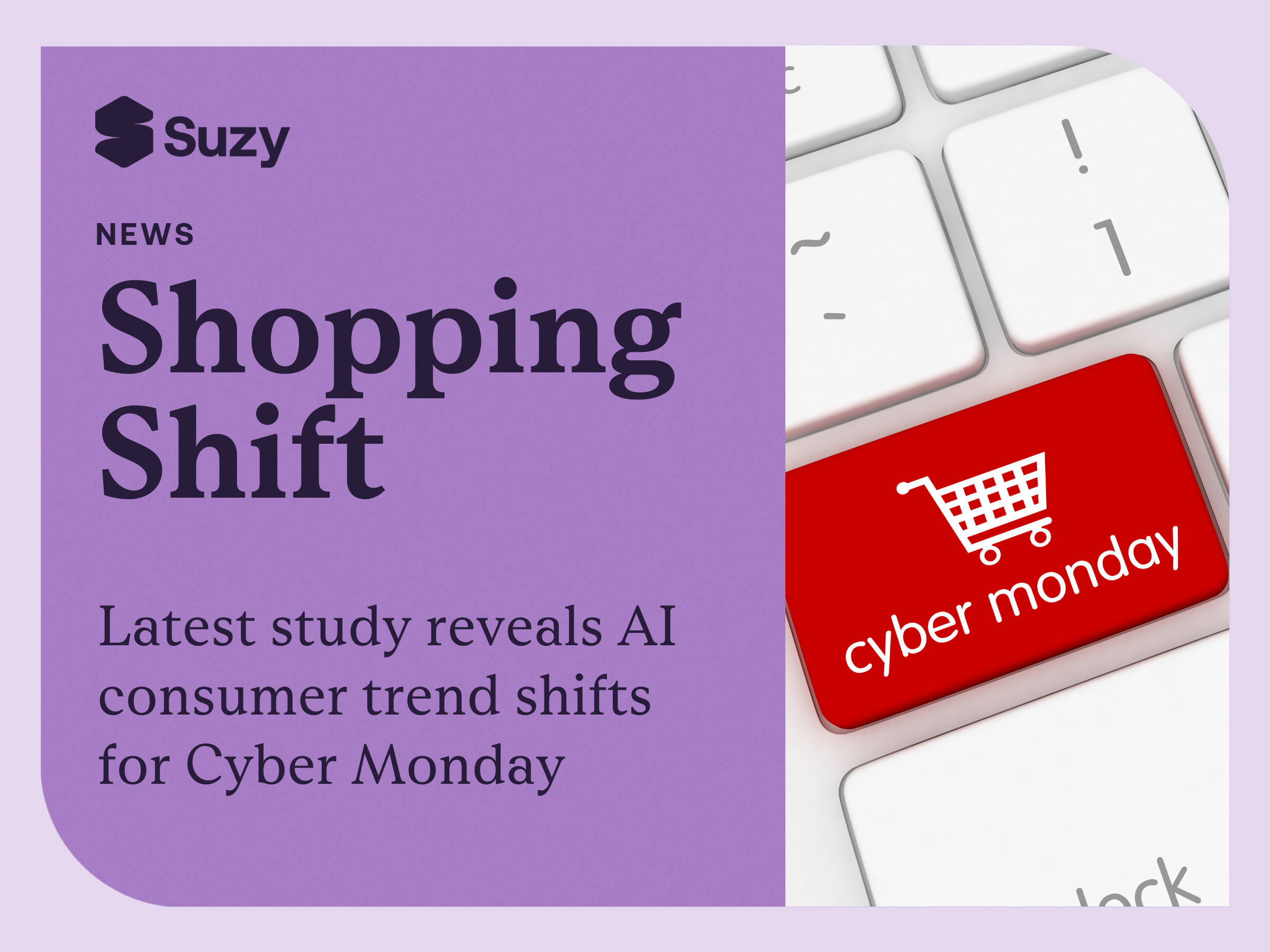By Bryan Silverman, COO, Suzy
The moment that changed how we think about automation
At Suzy, we’ve always been obsessed with speed—speed to insight, speed to decision, speed to market. So when AI started hitting real workflows, we dove in. Engineers generated code, marketers brainstormed copy, sales automated outreach. It felt like magic.
One of our first tests targeted a messy internal process overloaded with approvals. It seemed like the perfect candidate for automation. “If we can just make this faster,” we thought, “we’ll save everyone time.”
We automated everything. It ran faster—just not better. The issue wasn’t a lack of automation. It was the process itself. When we stripped it down and rebuilt from first principles, we used less automation and shipped a faster, higher-quality result. That experiment flipped a switch for us.
A few weeks later, we noticed the same pattern elsewhere. Dashboards showed more activity, but not necessarily more impact. The breakthroughs came when people used AI not to do the old work faster, but to rethink what the work should be:
- A marketer built a working prototype overnight.
- An engineer used an LLM to test messaging hypotheses before sprint review.
- A salesperson automated prep so they could spend more time with customers.
That’s when it clicked: the real opportunity isn’t just doing the same work faster—it’s doing better work altogether. That’s the shift from value capture to value creation.
In practice, this shift reframes how companies measure success. Instead of asking “how much can we automate,” the better question becomes “how much human potential can we unlock?” The focus moves from output metrics – emails sent, lines of code written – to outcome metrics like creativity unlocked, customer problems solved, or time redirected toward strategy.
From value capture to value creation
Reforge calls this the CODER framework—a model for how organizations evolve in their use of technology. Early on, companies focus on value capture: improving efficiency, reducing costs, scaling output. The true inflection point is value creation: using AI to design new workflows, business models, and customer experiences.
Most teams are stuck in the messy middle. They’ve added copilots to old workflows without reimagining the work itself. The gap between capture and creation is where opportunity lives. Leaders who close it ask different questions:
- What new value can we create for customers we couldn’t deliver before?
- How can automation make space for judgment, creativity, and strategy?
- Where can we 10x outcomes per person, not just 2x task velocity?
This is where leadership mindset matters most. True value creation requires permission to experiment – and sometimes to fail. Teams can’t redesign work if they’re punished for deviating from legacy processes. The most innovative organizations treat experimentation as an operational discipline, not a side project. They invest in systems that allow controlled risk-taking, transparent learning, and rapid iteration.
Roles are merging—and that’s the point
We’re watching the org chart invert.
Nontechnical teams are becoming builders. With tools like Zapier, Make, Airtable, and ChatGPT, marketers and ops leaders spin up automations and prototypes on their own.
Technical teams are becoming more commercial. Engineers use AI to clear boilerplate so they can focus on architecture, product-market fit, and go-to-market impact.
Everyone doubles down on their “special sauce.”
- Sales automates follow-ups to spend more time in conversation.
- CS uses AI to flag risk early and double down on empathy where it matters.
- Marketing tests copy across audiences before campaigns go live.
This merging of roles isn’t chaos—it’s collaboration at scale. But here’s the nuance: not everything needs AI.
The organizations thriving in this hybrid era are those that intentionally blur lines without erasing expertise. They foster “fusion teams” that combine domain knowledge with technical enablement, creating a shared language between business and engineering. When every department can prototype, test, and learn – but within a clear governance framework – innovation compounds instead of fragmenting.
The power of “old school” automation
In a world obsessed with “AI everywhere,” it’s easy to forget that simple, deterministic automation—rules, triggers, scheduled workflows—is still the backbone of operational excellence. Not every problem needs a neural network. Often, a clear “if-this-then-that” wins on reliability and speed.
Think about where classic automation compounds value:
- Customer onboarding. Auto-tag new clients, personalize welcome sequences, trigger success plans, and log tasks for quarterly reviews—no model required.
- Internal reporting. Pull metrics from multiple tools into one weekly digest with threshold alerts; leaders get the same clean view every Monday.
- Routine QA and governance. Validate inputs, enforce required fields, and fire alerts when numbers fall out of range. Simple rules prevent expensive surprises.
These aren’t flashy, but they create the stability that makes AI experimentation safe. You get dependable baselines, cleaner data, and predictable handoffs—so when you do add AI, it augments something sturdy instead of amplifying chaos.
In other words, automation lays the tracks before AI drives the train. Companies that skip this step often find themselves fixing basic process issues with advanced tools, burning time and credibility. The lesson: automate the known, experiment with the unknown.
Human “special sauce” – amplified, not replaced
Once the repetitive work is automated—scripted or AI-assisted—people lean into the work only humans can do:
- Engineers tackle harder problems, mentor, and make architecture decisions that compound.
- Marketers shift from production to story, positioning, and true product thinking.
- Sales deepens relationships because prep and hygiene run themselves.
- Insights teams stop pulling data and start interpreting meaning, connecting dots, and telling the story across the business.
This is the paradox of automation: the more you automate the what, the more valuable the why becomes. The goal isn’t less human work; it’s making human work matter more.
As Deloitte’s 2025 Human Capital Trends report found, companies that reallocate time saved through automation toward creativity, innovation, and learning see 1.7x faster growth. The takeaway is clear: automation doesn’t just reduce costs—it compounds human advantage.
How to operationalize AI with intention
Moving from experimentation to scale starts with a simple rule: focus on outcomes, not workflows. Define the result you want—faster response times, higher conversion, a better experience—then design backward.
Here’s an outcome-first playbook you can apply now:
- Start with outcomes, then map workflows backward.
- Create sandbox space for experimentation.
- Design for human + machine collaboration.
By starting with outcomes, companies make sure every automation ladders back to impact – not just activity.
At Suzy, this principle shapes how we build. Our internal teams prototype new workflows weekly, not annually. We treat every experiment as a hypothesis: what’s the business problem, what’s the expected gain, and how do we measure impact? That rigor allows experimentation to scale safely – and ensures that every “win” ladders up to something measurable.
What this means for brands
At Suzy, we’re not just helping brands adopt AI—we’re living it. Many teams hear “do more with less” and “use more AI,” but don’t know where to start. The path forward isn’t “AI everywhere.” It’s AI and automation where they create real outcomes, layered on top of clean data, clear processes, and human judgment.
For most brands, that means starting small but starting now. Begin with one process that eats time and energy, then redesign it with an outcome-first mindset. Measure success by the space you create for creativity, not the number of tasks eliminated. Each small success compounds confidence – and momentum builds faster than you expect.
Closing thought: creation is the new efficiency
That first automation project taught us something simple: speed without direction is just motion. The real transformation came when we stopped automating a bad process and redesigned it from the ground up. Once the process was right, automation became the multiplier—not the goal.
That’s the opportunity in front of every company right now. Capture the easy wins. Automate the repeatable. But remember: the value of AI isn’t in doing your job faster—it’s in reimagining what your job could be.
Because when automation clears the noise, creativity becomes the differentiator. That’s what separates the companies chasing efficiency from those creating entirely new categories. Operationalizing AI isn’t about technology – it’s about transformation.
Operationalize AI not as a tool, but as a turning point. The companies that win won’t just automate work; they’ll automate learning. They’ll operationalize insight. And they’ll create the future—one workflow at a time.
Ready to see how Suzy can help you operationalize AI and automation across your business? Book a demo and discover how you can move from value capture to value creation – powered by real-time consumer insight.
.webp)







.png)